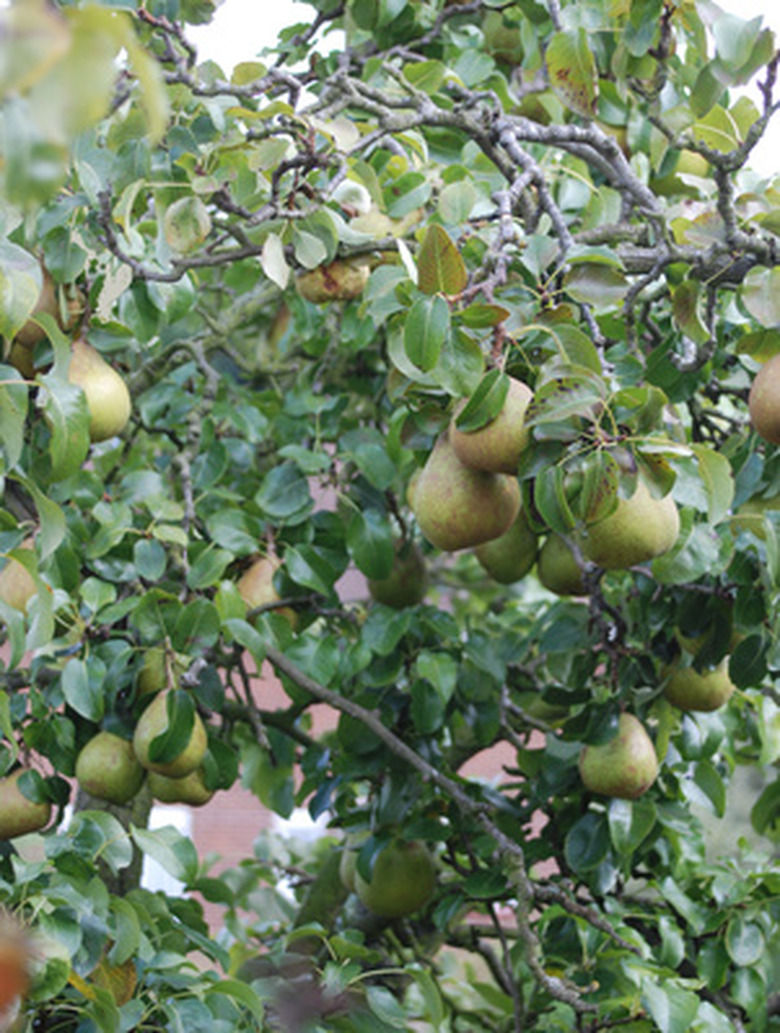Pear Tree Beetles
Pear trees are used in the home landscape as ornamental pieces and as a source or fruit. They have beautiful spring flowers and provide welcome shade in the summer. Pear trees are susceptible to relatively few pests. Among those to watch for are several species of beetles. Left to multiply, these insects can cause serious damage and, in some cases, the death of the pear tree.
Types of Beetles
The types of beetles that can affect pear trees are numerous. Boring insects–the shothole beetle and ambrosia beetle–both use the pear tree, among others, as a host. The shothole beetle burrows under the bark and feeds on the sapwood. The ambrosia beetle burrows into the wood itself. Japanese beetles are attracted to most fruit-bearing and ornamental trees and will feed on leaves and young shoots.
- Pear trees are used in the home landscape as ornamental pieces and as a source or fruit.
- Left to multiply, these insects can cause serious damage and, in some cases, the death of the pear tree.
Larvae
The larva of the shothole borer and ambrosia beetles also feed under the bark of the pear tree. The flat-headed apple tree borer beetles lay their eggs under the bark where, as larva, they feed on the sapwood before burrowing deep into the wood to pupate. The larvas overwinter in the wood, emerging in the spring as adults and begin laying eggs under the bark again.
Treatment
Most of the beetles that affect pear trees are only mildly impacted when treated with chemical insecticides. A general-purpose insecticide used in July or August may reduce beetle numbers and thereby reduce larva infestation. An application of dormant oil applied in late winter or early spring before bud break has some usefulness. It smothers many of the larvae. Japanese beetles can be treated with a spray of carbaryl, which can be applied separately or as part of a general-purpose insecticide. As an effective but more time-consuming method: beetles can be handpicked from the tree and disposed of in soapy water.
- The larva of the shothole borer and ambrosia beetles also feed under the bark of the pear tree.
- The flat-headed apple tree borer beetles lay their eggs under the bark where, as larva, they feed on the sapwood before burrowing deep into the wood to pupate.
Prevention
Prevention is far more effective than treatment. Beetles, particularly the boring type, are attracted to trees that are already stressed or injured. The first thing to do is to keep your pear tree healthy by providing plenty of water, conducting a regular fertilizer program and keeping the tree pruned and free of diseased or over-crowded limbs. Baited traps are also effective in keeping pear trees free of ambrosia and Japanese beetles, if you use them to lure the insects away.
Repercussions
Left untreated, beetles can cause serious health problems for the pear tree. Shothole borers' tunnels will interfere with fluids moving between the bark and the wood. As infested trees are usually already weakened, beetle activity can further weaken the tree, eventually girdling and killing it. Ambrosia beetles create galleries, longer tunnels in the wood with multiple shorter tunnels branching off the main tunnel. Each tunnel holds 40 to 50 eggs. The effect of this causes wilt and death of branches. It can leave the tree riddled with galleries and, consequently, weak. Japanese beetles feed on the leaves and shoots of trees. If their numbers become great, they can cause enough damage to leaves to reduce leaves' photosynthesis capabilities and weaken the tree. The greatest threat they pose is that, by weakening the tree, it becomes more vulnerable to other pests; further, the Japanese beetles may spread to other nearby plants and trees.
- Prevention is far more effective than treatment.
- Left untreated, beetles can cause serious health problems for the pear tree.
